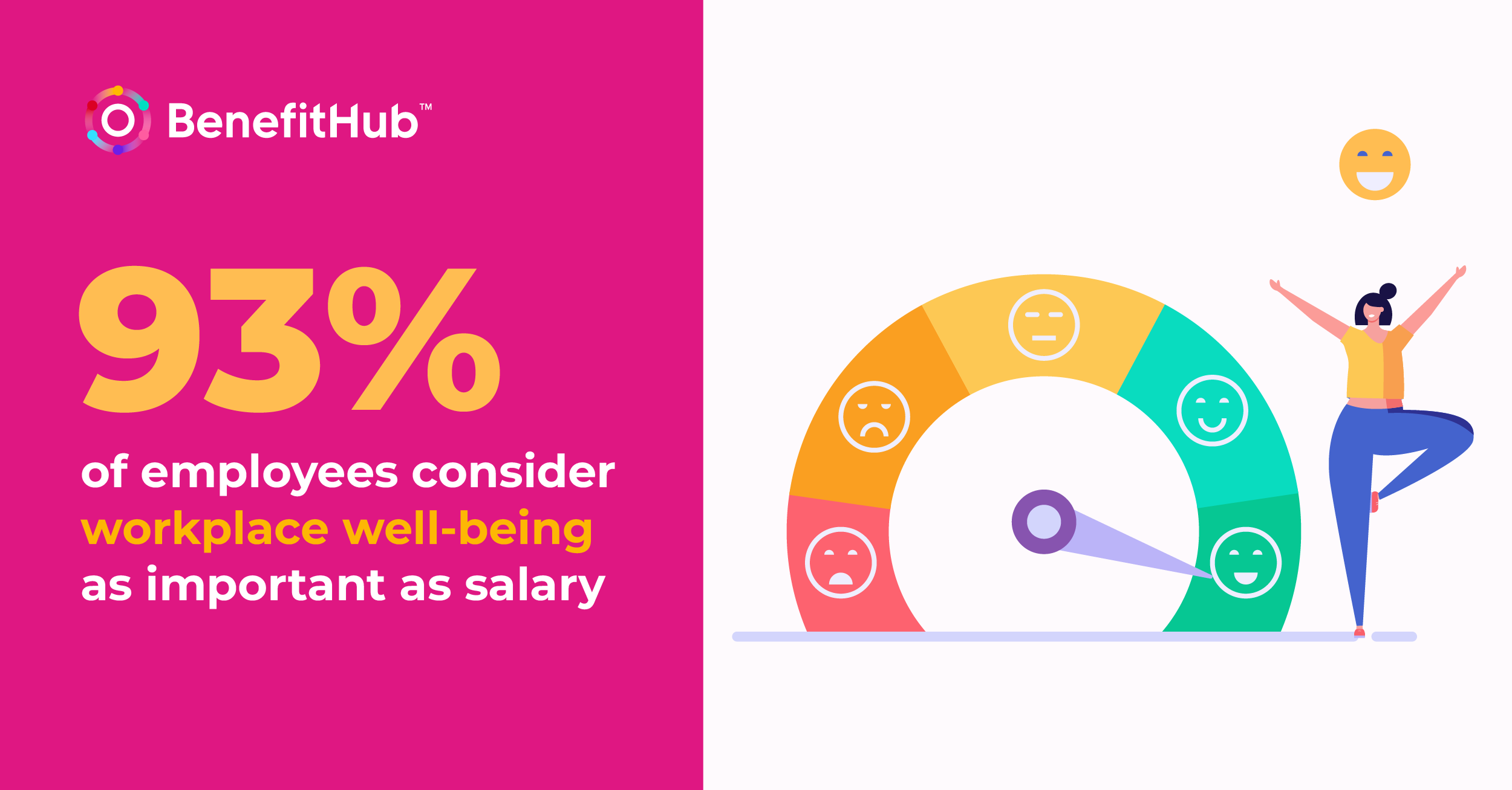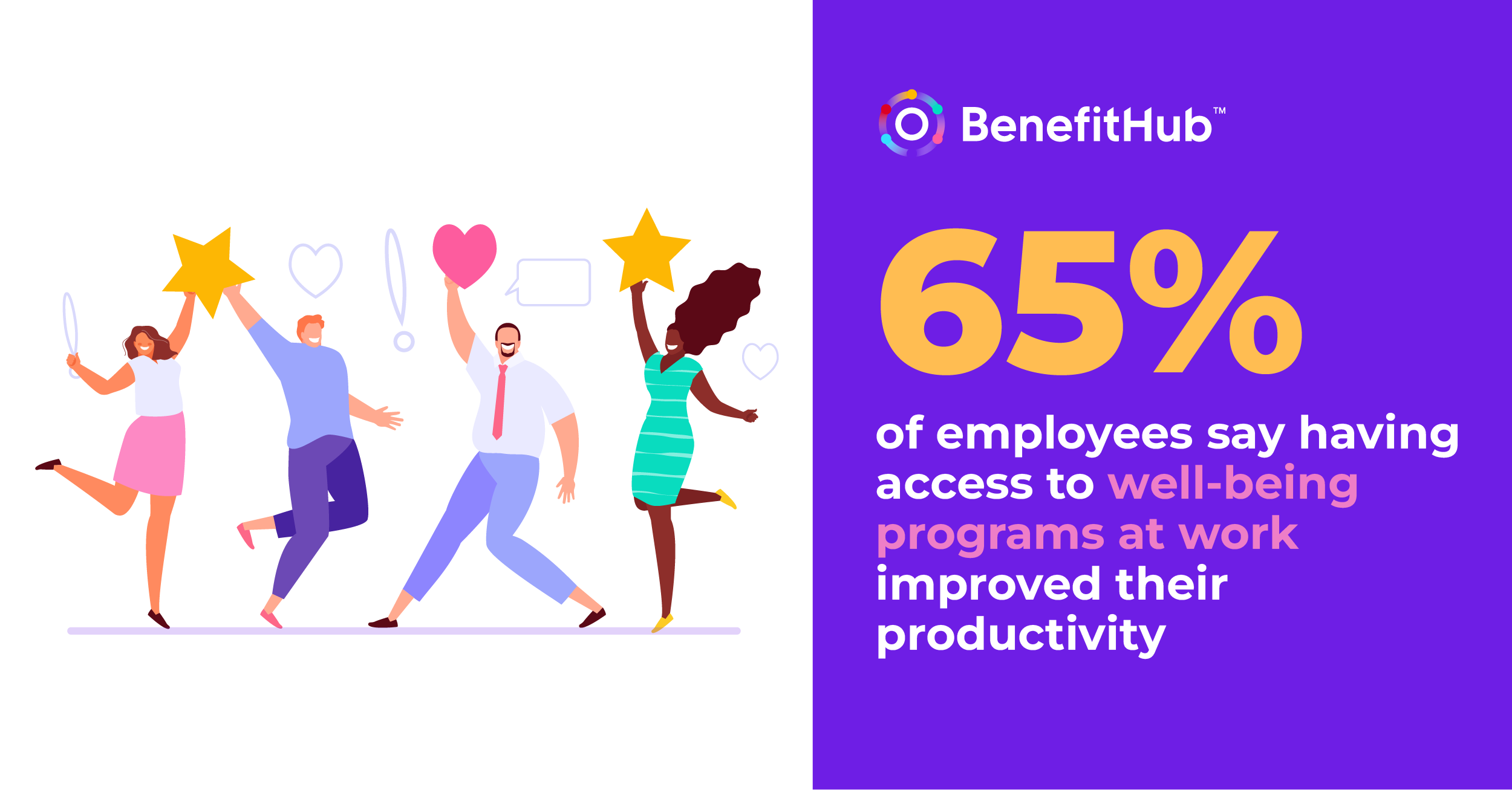Enhance your workforce's overall wellbeing by implementing lifestyle benefits that cater to different aspects of their lives, from health and wellness to financial stability.
Key Takeaways:
- Lifestyle Benefits are a type of non-salary benefit that go above and beyond standard medical, dental, and vision benefits in order to improve employee lives
- 65% of employees say having access to well-being programs improved their productivity
- 93% of employees consider workplace well-being as important as salary
- 78% of HR leaders have seen a cost reduction in healthcare as a result of offering wellness programs
What are Lifestyle Benefits?
Lifestyle benefits are voluntary benefits, or "employee perks," that seek to broaden employee access to goods and services that improve all areas of their lives, including mental, physical, psychological, and financial. These non-salary benefits go beyond standard medical and dental care, and are designed to support an increasingly diverse workforce and address the challenges of attracting, retaining, and engaging great talent.
Common categories of lifestyle benefits include: health and wellness, professional development, childcare, pet care, student loan assistance, productivity, food, wellness reimbursement, legal services, and more. For example, perks like employee gym memberships or flexible work schedules could fall under lifestyle benefits.
Understanding the Significance of Lifestyle Benefits on Attraction & Retention
In a world of increased competition over talent, employers can utilize lifestyle benefits to show potential employees that they care about their overall wellbeing and are committed to providing support beyond traditional compensation and benefits packages.
Countless research studies validate the importance of well-being. According to the 2024 State of Work-Life Wellness from WellHub, 93% of employees say workplace well-being is as important as salary - a 10% increase from 2022 (1). Further, 87% of employees would consider leaving a job that does not focus on their well-being, and 65% of employees say having access to well-being programs at work improved their productivity.

Closing the Wellbeing Gap: Employee Perception vs. Reality
While 42% of employees feel better off financially compared to a year ago, only 21% feel that their mental health has improved (3) and 31% of employees are still struggling with mental health (4).
Unfortunately, some employer sponsored wellbeing programs are missing the mark. According to Buck, only 28% of employees report that their employer's efforts have been helpful for supporting mental health, even though 46% of employees list it as a priority (2). Similarly, Metlife reports that 88% of employers think they are demonstrating care for their employees, but only 60% of employees feel cared for (3).
This suggests that there is a disconnect between how employers perceive their employees' wellbeing and how employees actually feel. Surveys report that focusing on lifestyle benefits that prioritize stress, exercise, burnout, time off policies, and anxiety/depression are good areas to start as they are important to both employers and employees (2). Other focus areas ranked highly by employees include financial wellbeing assessments, travel/vacation assistance, fitness/equipment savings, commuter savings, auto maintenance, and more.
This of course varies widely by generation. 40% of millennials report needing support for mental wellbeing, while only 16% of baby boomers agree. Creative strategies are needed to retain younger workers - 1 out of 2 millennials would change jobs for better benefits, and wish they had a better understanding of their benefits, compared to 45% of all employees (2).
While it is vital for employees to offer lifestyle benefits that address the specific needs and concerns of employees, they can't stop there. In order for employers to truly bridge this gap and create a more supportive work environment, they also need to be intentional with communicating these offerings and continue to iterate and build off of employee feedback.
Impact of Lifestyle Benefits on Employee Engagement & Productivity
Lifestyle benefits help employers create a positive work environment and promote a healthy work-life balance, which in turn leads to higher employee satisfaction and engagement. By supporting employee wellbeing from the get-go, employers can help avoid the cycle of burnout that impacts productivity.
According to global business consulting firm Protiviti, 69% of employees reported experiencing burnout during the pandemic (4). Companies that support employee needs beyond the workplace see a tangible increase in the number of employees reporting better mental health by more than 20%, which goes hand-in-hand with seeing a 21% increase in the number of high performers in the organization (4).
When employees feel supported and valued by their employers, they are more likely to be engaged and motivated to perform their best. 65% of employees say having access to well-being programs at work improved their productivity (2).

Learn how you can improve productivity with enhanced benefits offerings - Contact Us today.
Improved productivity, cultivating a positive work culture, and increasing retention rates are just a few of the benefits of offering a robust lifestyle and voluntary benefits package. Did we mention that 78% of HR leaders have seen a reduction in healthcare costs after implementing lower-cost wellbeing benefits? (1).
How to Offer Lifestyle Benefits with BenefitHub
BenefitHub is a comprehensive platform that enables employers to offer a wide range of lifestyle and voluntary benefits to their employees. Started with a vision of making voluntary benefits accessible to all employers, BenefitHub today is dedicated to providing employees with discounted goods and services, wellness programs, financials resources, and much more. The platform is user-friendly and customizable, allowing employers to tailor offerings to specific employee needs and preferences.
By partnering with BenefitHub, employers can demonstrate their commitment to employee wellbeing and attract and retain top talent in today's competitive job market.
Sources:
(1): WellHub, "The State of Work-Life Wellness 2024"
(2): Buck 2022 Wellbeing and Voluntary Benefits Survey Report
(3): Metlife's 22nd Annual U.S. Employee Benefit Trends Study 2024
(4): Protiviti, "Motivating the Multigenerational Workforce of 2030"

